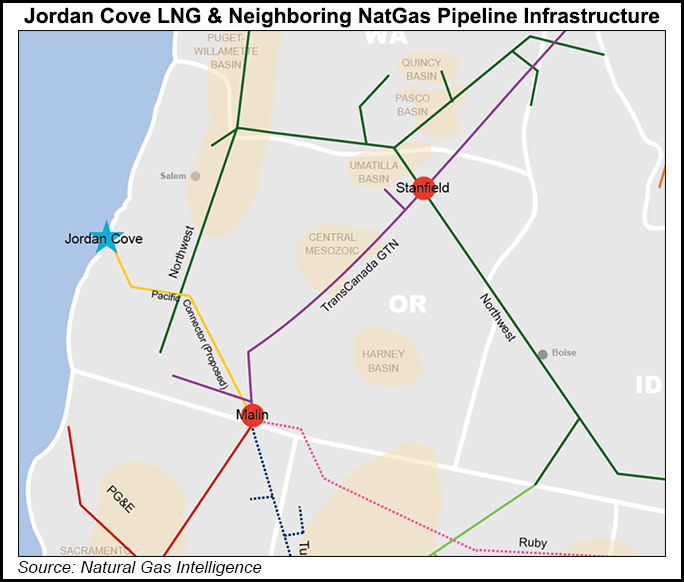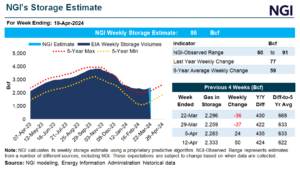LNG | LNG Insight | NGI All News Access | NGI The Weekly Gas Market Report
Jordan Cove LNG Secures Export License, but Uphill Battle Remains
The U.S. Department of Energy (DOE) on Monday issued an export license for the beleaguered Jordan Cove liquefied natural gas (LNG) terminal proposed for Coos Bay, OR.

The facility would be the first of its kind on the West Coast if it’s built and would further extend the reach of American natural gas into “key exporting markets” in Asia and beyond, said Steven Winberg, assistant secretary for fossil energy, in a virtual signing ceremony.
“There are few regions where it is more critical to advance energy security than in the Asia-Pacific region,” said Secretary Dan Brouillette, adding that countries like India, Japan and South Korea are also dependent on Russia and the Middle East for gas imports.
“If the United States can export LNG to the Asia-Pacific from our West Coast, we can help those nations and others in the region reduce their reliance on countries that use energy as political leverage,” he added.
Brouillette signed the final long-term order authorizing exports from Jordan Cove about four months after the Federal Energy Regulatory Commission finally authorized the siting, construction and operation of the terminal. The project has cleared a series of regulatory hurdles and faced staunch opposition from environmental groups since it was proposed by Veresen Inc., which is now part of Pembina Pipeline Corp.
Despite the federal approvals, the export terminal faces an uphill battle in Oregon, where regulators have denied key authorizations for the project, including a water quality certification and a dredging permit. The terminal would also need to execute long-term supply contracts with global buyers, which have been increasingly hard to come by in a market full of cheap natural gas.
Jordan Cove would be capable of liquefying up to 1.04 Bcf/d for export. It would include a pipeline gas conditioning facility, five liquefaction trains, two full-containment LNG storage tanks and associated equipment, an LNG loading platform and transfer line, and marine and associated facilities.
© 2024 Natural Gas Intelligence. All rights reserved.
ISSN © 1532-1231 | ISSN © 2577-9877 | ISSN © 1532-1266 |


